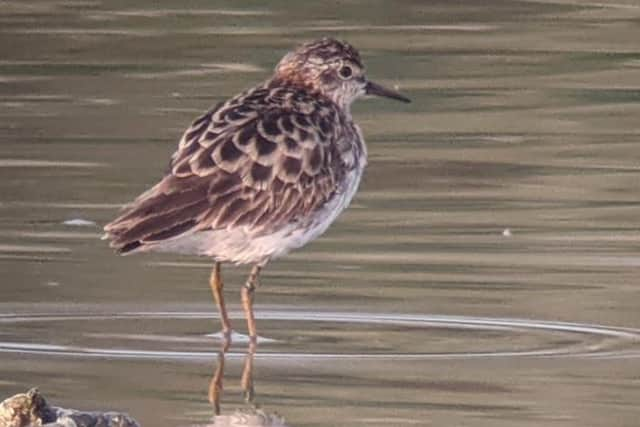Long-toed stint at RSPB St Aidan's nature reserve: Why rare bird's first ever appearance in Yorkshire is completely unprecedented
There have only been four previous sightings of a long-toed stint in the British Isles, and the most recent was in Ireland in 1996 - but one of the species has now spent several days at RSPB St Aidan's, a former open cast mine which flooded in the 1980s and became a nature reserve.
The small wading birds spend the summer breeding in Siberia, east of the Ural Mountains, and head for exotic climes in the winter, migrating to India, Indonesia, Japan and even Australia. For one to cross the North Sea is highly unusual.
Advertisement
Hide AdAdvertisement
Hide AdThe RSPB have now recorded 2,000 visitors to the site since the stint's presence was verified, and birdwatchers have come from the Shetland Isles, Ireland and even Belgium.


A member of Swillington Ings Bird Group first spotted the bird, according to chair David Hunter, who has now seen it himself.
"There was some controversy over ID, as there are six species of stint, three of which have yellow legs. At first it was thought to be a pectoral sandpiper, but eventually video footage and photos enabled it to be verified. It has never been recorded in Yorkshire before.
"Vagrant birds often end up in the UK from the east, but it's often to do with high pressure over Siberia and the Atlantic. Having looked at the weather charts, it's a little bit odd that the stint is here - but a lot of birds do get blown off course.
Advertisement
Hide AdAdvertisement
Hide Ad"It should be in India for the winter, but it's still at St Aidan's today! It's unclear what has happened to it, but the reserve is the right habitat for it - the RSPB lower the reed beds there to expose the mud. In the Lower Aire Valley there is a 10-12-mile stretch of wetland sites, including Fairburn Ings and Skelton Lakes, that would have attracted it."
On Sunday, Mr Hunter saw around 500 birders at the reserve hoping to spot the long-toed stint, and his group's website has had 18,000 visits from users in 35 countries since posting video clips of the bird.
"Overall it's been a fantastic year for rare birds in Yorkshire - we've had the white-tailed lapwing at RSPB Blacktoft Sands on the Humber Estuary (another first ever Yorkshire record), a rare warbler from the Far East, and the albatross at RSPB Bempton Cliffs. You sometimes get these years of plenty followed by lean years!"
Comment Guidelines
National World encourages reader discussion on our stories. User feedback, insights and back-and-forth exchanges add a rich layer of context to reporting. Please review our Community Guidelines before commenting.